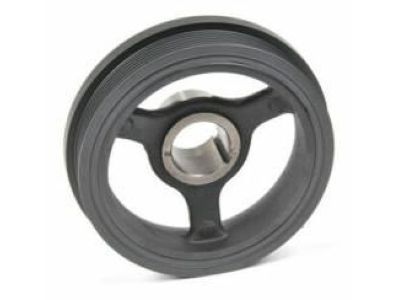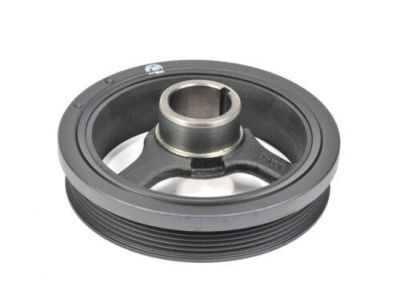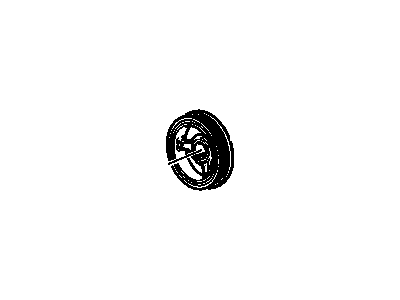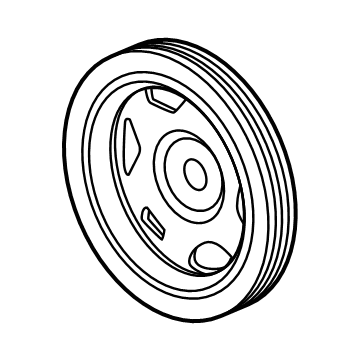
My Garage
My Account
Cart
Genuine GMC Acadia Crankshaft Pulley
Crankshaft Pulley Engine Harmonic Balancer- Select Vehicle by Model
- Select Vehicle by VIN
Select Vehicle by Model
orMake
Model
Year
Select Vehicle by VIN
For the most accurate results, select vehicle by your VIN (Vehicle Identification Number).
4 Crankshaft Pulleys found
GMC Acadia Balancer Assembly, Cr/Shf
Part Number: 12697768$45.41 MSRP: $109.97You Save: $64.56 (59%)Ships in 1-2 Business DaysGMC Acadia Balancer Assembly, Cr/Shf
Part Number: 25202078$65.33 MSRP: $112.67You Save: $47.34 (43%)Ships in 1-2 Business DaysGMC Acadia Balancer Assembly, Cr/Shf
Part Number: 12700427$75.63 MSRP: $114.42You Save: $38.79 (34%)Ships in 1-3 Business Days
GMC Acadia Crankshaft Pulley
The Crankshaft Pulley in GMC Acadia vehicles is quite essential in transmitting energy from the engine to other parts like the power steering pump and the alternator. As a result, the Performance Crankshaft Pulley is connected to the engine crankshaft and transmits torque directly to the components. Also noteworthy is the Performance Crankshaft Pulley, or the harmonic balance wheel, used to lessen the vibes in the car making for a more comfortable drive. Several models of Performance Crankshaft Pulley have been used in Acadia models with each type having the purpose of providing efficient power output while at the same time reducing the amount of stress on an engine.
Each OEM GMC Acadia Crankshaft Pulley we offer is competitively priced and comes with the assurance of the manufacturer's warranty for the part. Furthermore, we guarantee the speedy delivery of your orders right to your doorstep. Our hassle-free return policy is also in place for your peace of mind.
GMC Acadia Crankshaft Pulley Parts Questions & Experts Answers
- Q: How to install a crankshaft pulley in 3.6L V6 engine on GMC Acadia?A:This procedure requires a special pulley installation tool and a new crankshaft pulley bolt. Before proceeding, read through the entire procedure and obtain the necessary tools and materials. Start by disconnecting the cable from the negative battery terminal. Raise the vehicle and support it securely on jackstands. Remove the drivebelt. Install an engine support fixture or an engine hoist to the engine lifting bracket on the right side. Alternatively, the engine may be supported from below the Oil Pan with a floor jack and a block of wood. If this is done, position the wood and the jack to avoid damaging the oil pan. Tighten the engine support chain to remove the weight from the Engine Mounts. Remove the right side engine mount. Carefully lower the engine about two inches for clearance. Remove the crankshaft pulley bolt. Prevent the crankshaft from turning by removing the starter motor and wedging a large screwdriver or pry bar in the drive plate ring gear teeth. Install a large three-jaw puller on the pulley, and remove the pulley. Make note of how far the pulley is pressed onto the crankshaft. It must be installed in the same position. Use the puller to draw the pulley from the crankshaft. Lubricate the inside of the pulley bore with clean engine oil. Don't let oil contact the outside of the pulley's snout or the oil seal in the timing chain cover. The pulley must only be installed into a dry seal. Obtain a crankshaft pulley installation tool. Use only this tool to press the pulley into place. Install the pulley in its original position. The installation tool should be bottomed on the end of the crankshaft. Remove the installation tool. Install the new crankshaft pulley bolt. Have an assistant wedge the large screwdriver or pry bar in the drive plate ring gear teeth, then tighten the bolt to the torque and angle of rotation. The remainder of installation is the reverse of removal.
Related GMC Acadia Parts
Browse by Year
2023 Crankshaft Pulley 2022 Crankshaft Pulley 2021 Crankshaft Pulley 2020 Crankshaft Pulley 2019 Crankshaft Pulley 2018 Crankshaft Pulley 2017 Crankshaft Pulley 2016 Crankshaft Pulley 2015 Crankshaft Pulley 2014 Crankshaft Pulley 2013 Crankshaft Pulley 2012 Crankshaft Pulley 2011 Crankshaft Pulley 2010 Crankshaft Pulley 2009 Crankshaft Pulley 2008 Crankshaft Pulley 2007 Crankshaft Pulley
















